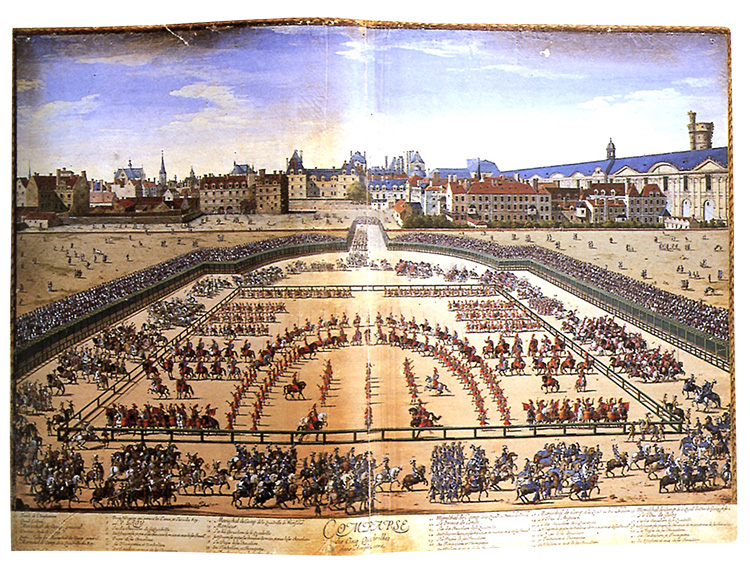
Why Collection Always Supersedes Rhythm
Paul Belasik
If I can use the questions that have come across my desk recently, and have come up in lessons, especially with younger trainers, there seems to be a competition developing between rhythm and collection, at least in competitive dressage. It might be necessary to remind trainers and judges that while rhythm is a powerful component of dressage, collection always supersedes rhythm. This is based on a hierarchy which is not arbitrary, but built on at least 500 years of masterful study.
“The arts have a development which comes not only from the individual, but also from a cumulative force, the civilization which precedes us. One cannot do just anything. A talented artist cannot do whatever he pleases. If he only used his gifts, he would not exist. We are not the master of what we produce. It is imposed on us.” – Henri Matisse
Before we go into why rhythm can never supersede collection, it might be important to go over a few definitions.
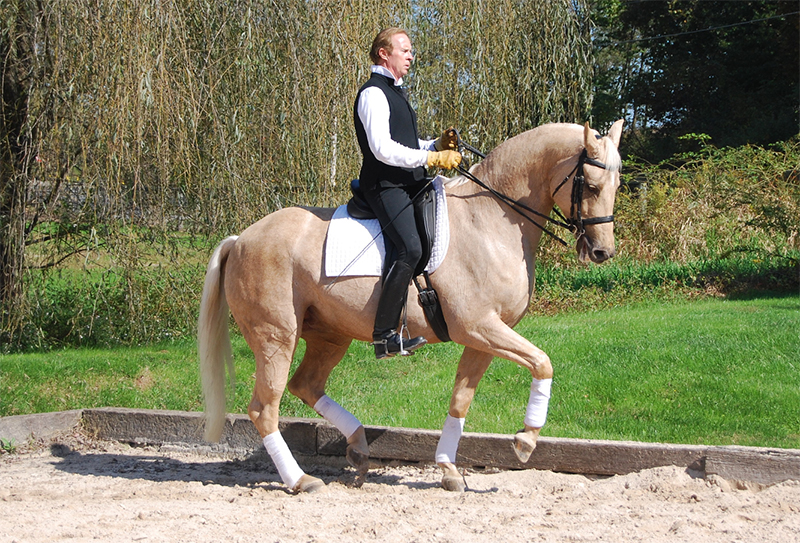
A collected and active piaffe.
Rhythm:
Rhythm is a strong repeated pattern of movement or sound. Circus trainers are often masters of presentations that couple rhythmic movement and rhythmic sound. They have realized that rhythm is a strong repetitive pattern of sound or movement, and that if you combine the two together it can produce a beguiling, visceral reaction for an audience. To that end, I don’t know of any circus act that isn’t accompanied by music. One cannot underestimate the seductive power of rhythm. In Maurice Ravel’s famous and popular musical composition “Bolero,” a two bar rhythm is repeated 169 times for 15 solid minutes. There is an “unchanging ostinate rhythm set out by a snare drum.” Interestingly, Ravel commented about his own work “Bolero,” saying “there is no music in it.”
Collection:
In its simplest definition, collection is a display of longitudinal balance. Collection can come off as elitist because to understand its importance in dressage, it will require a little more work than just being motivated to clap your hands, shake your head or tap your feet in order to be part of the performance. Collection has a very sacred fundamental place in classical dressage. From at least the 1500’s there has been a fascination with airs, leaps above the ground or on the ground. In the case of the levade, this air became the pinnacle of manege or school riding. They were performed in exhibitions, in horse ballets. Even a perfunctory glance at historical paintings, engravings or sculptures will show many examples of a collected horse.
See Walter Liedtke’s beautiful book “The Royal Horse and Rider, Painting, Sculpture and Horsemanship 1500 – 1800” (1989, Meriden-Stinehour Press).
These tremendous demonstrations of power and balance could not safely be performed without preliminary training for both the horse and rider. It was really here, in the preparations for these airs that the art and science of collecting a horse upon its haunches evolved.
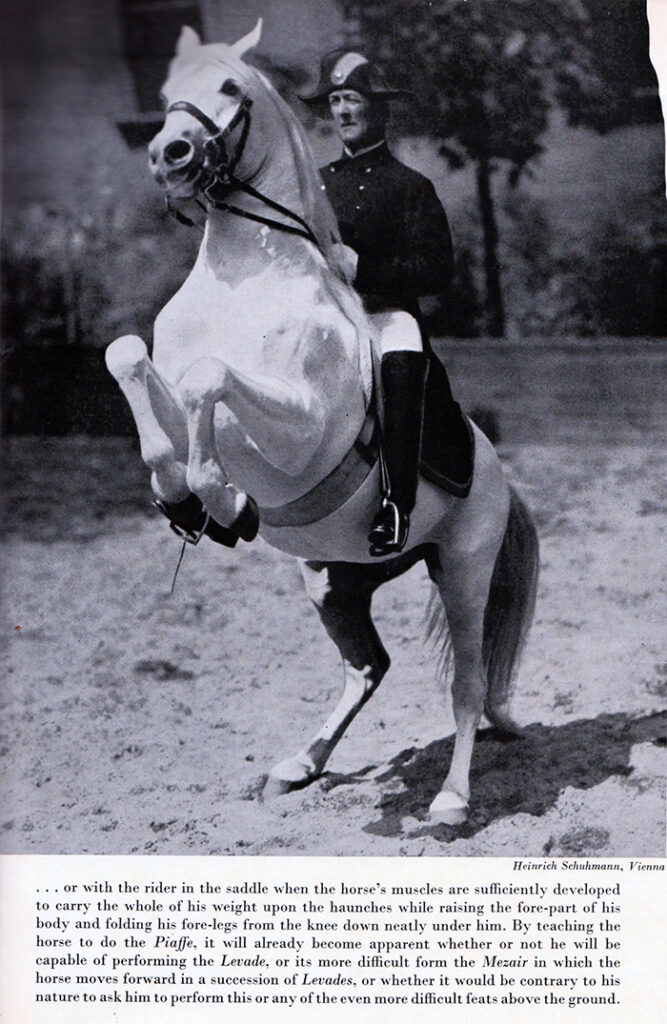
As the horse carries more weight behind, the stance will widen for a better base of support. Here is an example of a horse completely balanced on the hind legs.
Photo Credit: The Spanish Riding School, Mathilde Windisch-Graetz, A.S. Barnes and Company, NY 1956
The Duke of Newcastle in the 1600’s wrote, “The whole object of the school horse is to get the horse upon the haunches.”
Books by Grisone, Duarte, Gueriniere, La Broue, Duke of Newcastle, Pluvinel, Lohneynsen, Steinbrecht, Decarpentry and many others have chronicled the strong evolution in training collection.
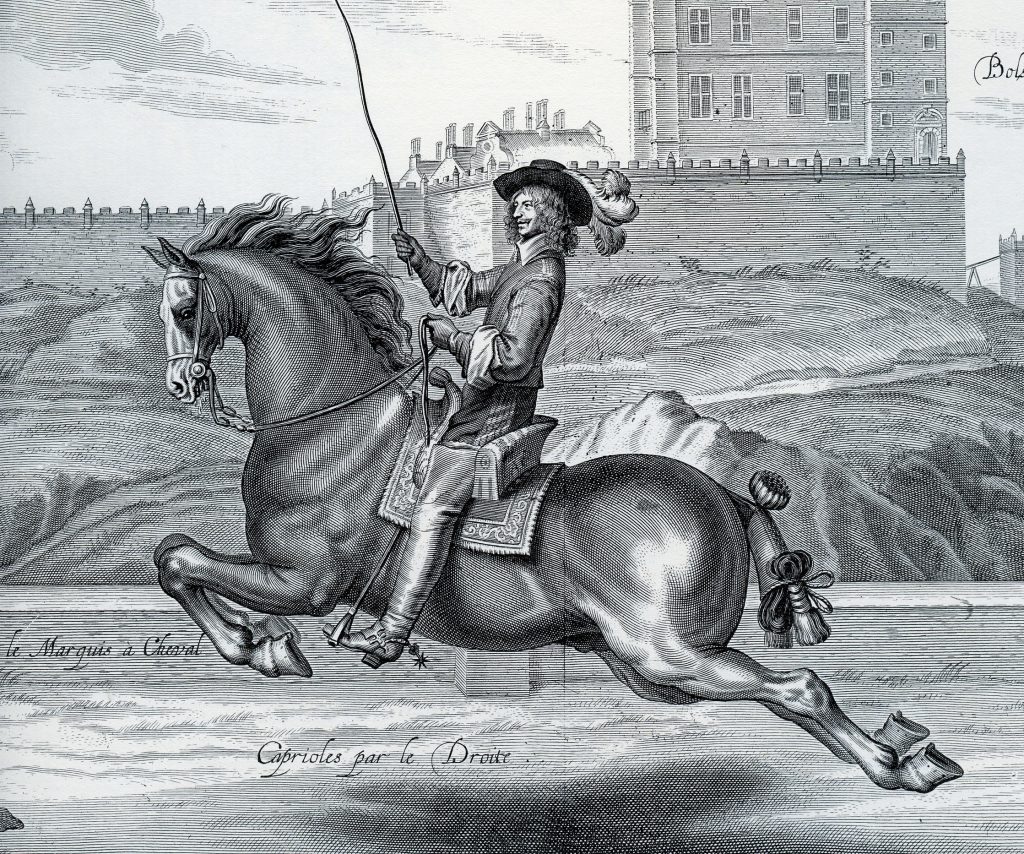
In performances by the Cadre Noire at Samur in France, one can see examples of airs above the ground set up with the terre-a-terre, an increasingly collected canter that changes rhythm. De La Gueriniere, with a reference to the Duke of Newcastle, described it as “…a gallop in two beats, on two tracks, much shorter and more collected than that of an a ordinary gallop, and with a different position of the legs, where the forelegs and hind legs are raised together and strike the ground together in regular succession.”
This very collected canter which bounced back and forth prepared the extreme momentum required for the capriole, for example.
At the Spanish Riding School in Vienna, one could see examples of airs that are set up by increasingly collected piaffe, which gathers momentum with continuous loading of the hindquarters which lower and in turn lower the elevation of the hind feet. The rhythm changes completely as the hind legs will stop entirely to set up a lift like a levade or a jump like courbette or capriole.
In the highest forms of collection, rhythm breaks down because mechanically it has to. Rhythm is not the objective, balance is the demonstration. Often exquisite balance. It can be so balletic and happen so smoothly, like a masterful magician, even if they tell you something is coming you can’t see it. You just marvel at what you’ve witnessed.
The point is that even if a rider doesn’t wish to pursue airs above the ground, knowledge of the process will help discern which canter pirouettes are more classically correct, which piaffes are more classically correct. When overzealous trainers keep insisting on higher action from the hind legs in piaffe, they are inadvertently forcing the horse out of true collection. Deviations usually start occurring, one must stand in front and behind of horses in piaffe to see deviations like balance in front, ropewalking behind.
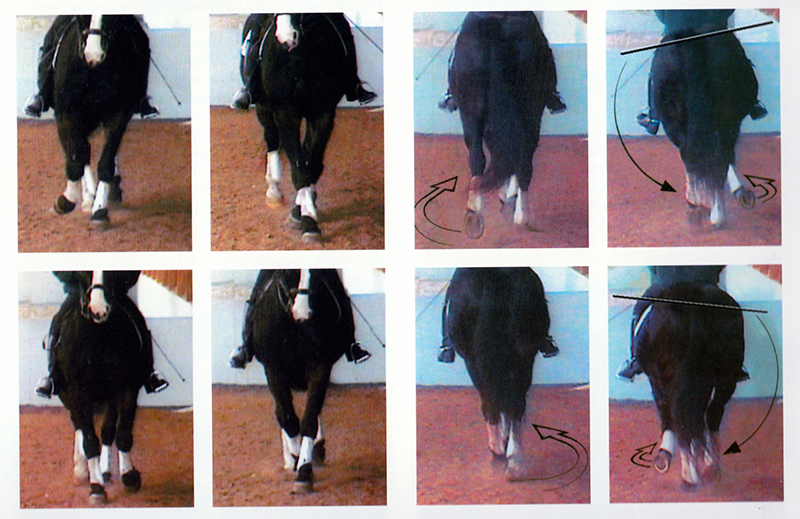
One must stand in front of and behind horses in piaffe to see deviations. Rolling hind legs carrying no weight.
Photo Credit: Dressage for the 21st Century, Paul Belasik, Trafalgar Square Publishing, Pomfret VT, 2002.
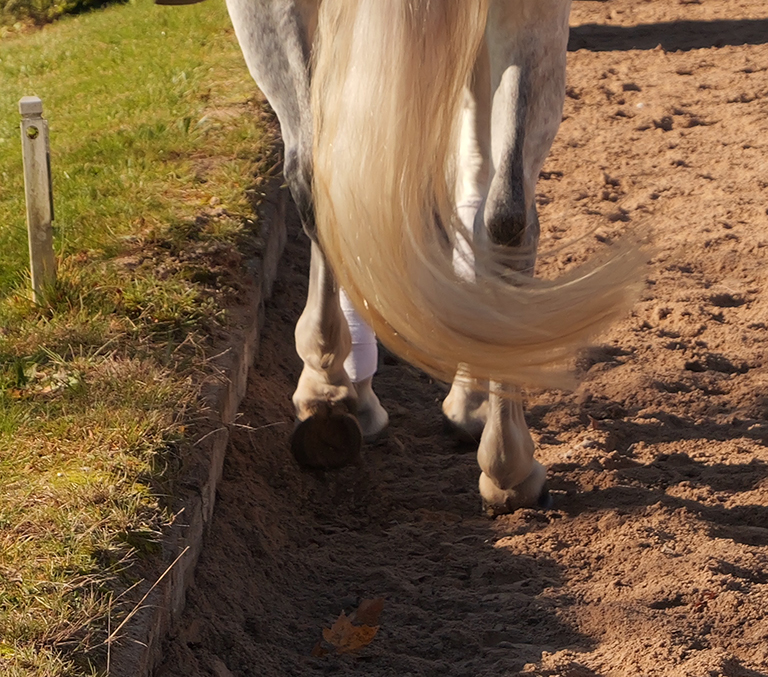
When viewed from behind, the stance will often widen slightly as proof of load bearing. If the stance narrows or wobbles, the stance is not carrying weight.
more follows:
In the correct piaffe, the hind quarters will move more under the body. It’s not a matter of just squashing the hind legs down or squatting, often with the hocks active, but behind the vertical line drawn from the point of the buttocks down. The hips and back must be strong and flexible in order to bring the hindquarters under the mass, preparing to lift. When viewed from behind, the stance will widen slightly as proof of the load bearing. If the stance narrows or wobbles, it cannot carry weight. The forehand usually takes over and deviations of the front limbs will also show up.

In the correct piaffe, the hindquarters will move more under the body. It’s not a matter of just squashing the hind legs down or squatting, often with the hocks active, but behind the vertical line drawn from the point of the buttocks down.
Theses piaffes are failing collection. Sometimes when viewed from the side, they can maintain a nice rhythm. A piaffe that maintains steady rhythm but shows no collection can never be judged as a high quality piaffe or equal to a piaffe that shows collection but may falter in rhythm. The piaffe is a demonstration of longitudinal balance, not rhythm. Rhythm cannot beat collection. In the canter, if pirouettes spin or slow down too much, they also reveal problems of collection.
If riders, trainers, and judges don’t understand this, instead of dressage being a continuously developing discipline built on at least 500 years of documented evidence, trainers and judges become proponents of a nouvelle dressage, which is fine, but one needs to explain which camp one is in.
Physically, collection supersedes rhythm because of simple rules of biomechanics, kinetic and potential energy. Philosophically, collection beats rhythm because the simple answer is that it is much harder to get.

Breeding a dressage star in Australia? There’s an amazing range of top European bloodlines available from: www.ihb.com.au
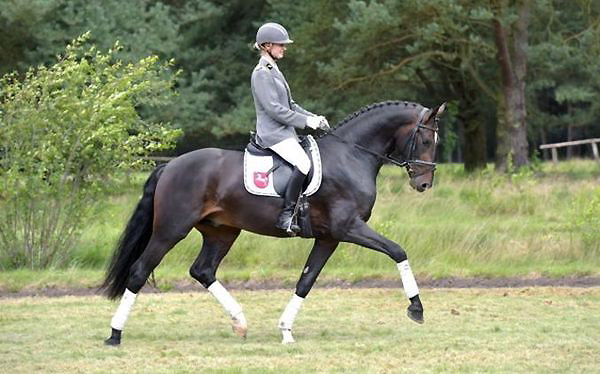
Large range of semen available in Australia from the German State Hanoverian Stud in Celle, including: Furst Belissaro (pic) and Fusionist.

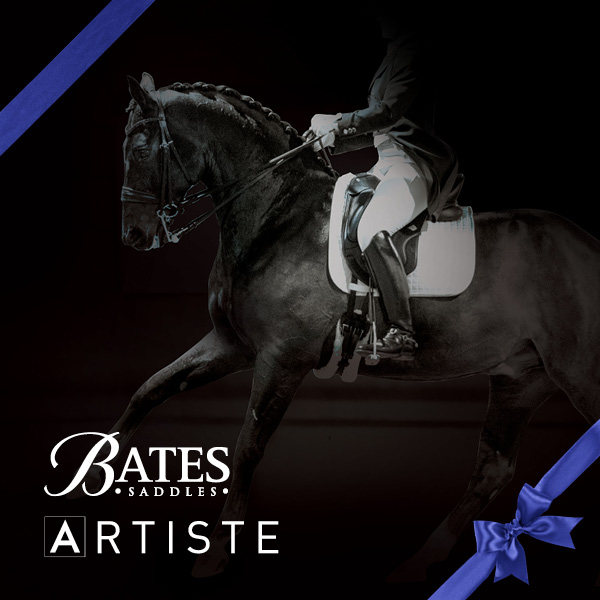
Very interesting article again, like all the others by Mr. Belasik. This time though, I disagree a bit. My knowledge about airs above the ground is non-existent, therefore the following remarks are on competitive dressage up to Grand Prix level only.
We learned from our trainers (Tempelmann, Peilicke, Schultheis) that the art of collection is activating the hind legs while keeping the rhythm. If collection work is done properly, there is no conflict between these two objectives. Proper firstly means that collection work has to be done uphill forward in accordance with the horse´s movement. If the rider tries to collect his horse against the movement, i.e., backwards, rhythm might become impaired. And secondly, proper means that in training the phases of collection must always be followed by phases of relaxation, so that the horse keeps its forward drive and rhythm.
I am afraid that Mr. Belasik´s article could be misunderstood by learning from it that in dressage tests rhythm is not important as long as the collection is visible. Having read his articles before, it is hard to believe that this really could be his opinion.